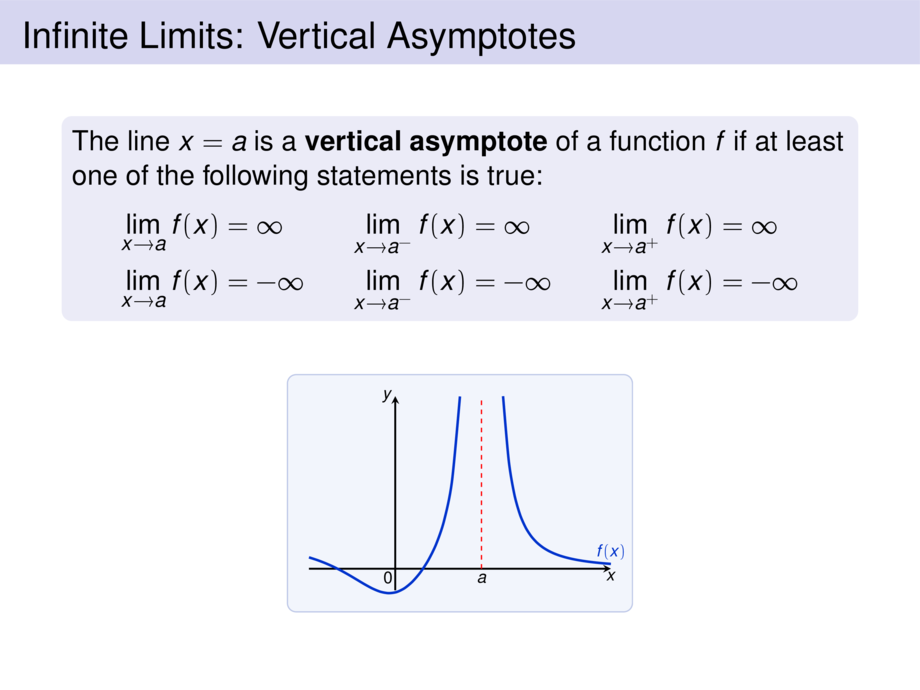



































































































148/154
\begin{frame}
\frametitle{Infinite Limits: Vertical Asymptotes}
\begin{block}{}
The line $x = a$ is a \emph{vertical asymptote} of a function $f$
if at least one of the following statements is true:
\begin{talign}
\lim_{x\to a} f(x) &= \infty &
\lim_{x\to a^-} f(x) &= \infty &
\lim_{x\to a^+} f(x) &= \infty\\
\lim_{x\to a} f(x) &= -\infty &
\lim_{x\to a^-} f(x) &= -\infty &
\lim_{x\to a^+} f(x) &= -\infty
\end{talign}
\end{block}
\medskip
\begin{center}
\scalebox{.6}{
\begin{tikzpicture}[default]
\diagram{-2}{5}{-.5}{4}{0}
\diagramannotatez
\draw[cblue,ultra thick] plot[smooth,domain=-2:1.5,samples=20] function{1/((x-2)**2)-3/(x**2 + 2)+0.7};
\draw[cblue,ultra thick] plot[smooth,domain=2.5:5,samples=20] function{1/((x-2)**2)} node [above] {$f(x)$};
\node [anchor=north,inner sep=1mm] at (2cm,0cm) {$a$};
\draw [dashed,cred] (2cm,0cm) -- (2cm,4cm);
\end{tikzpicture}
}
\end{center}
\end{frame}

